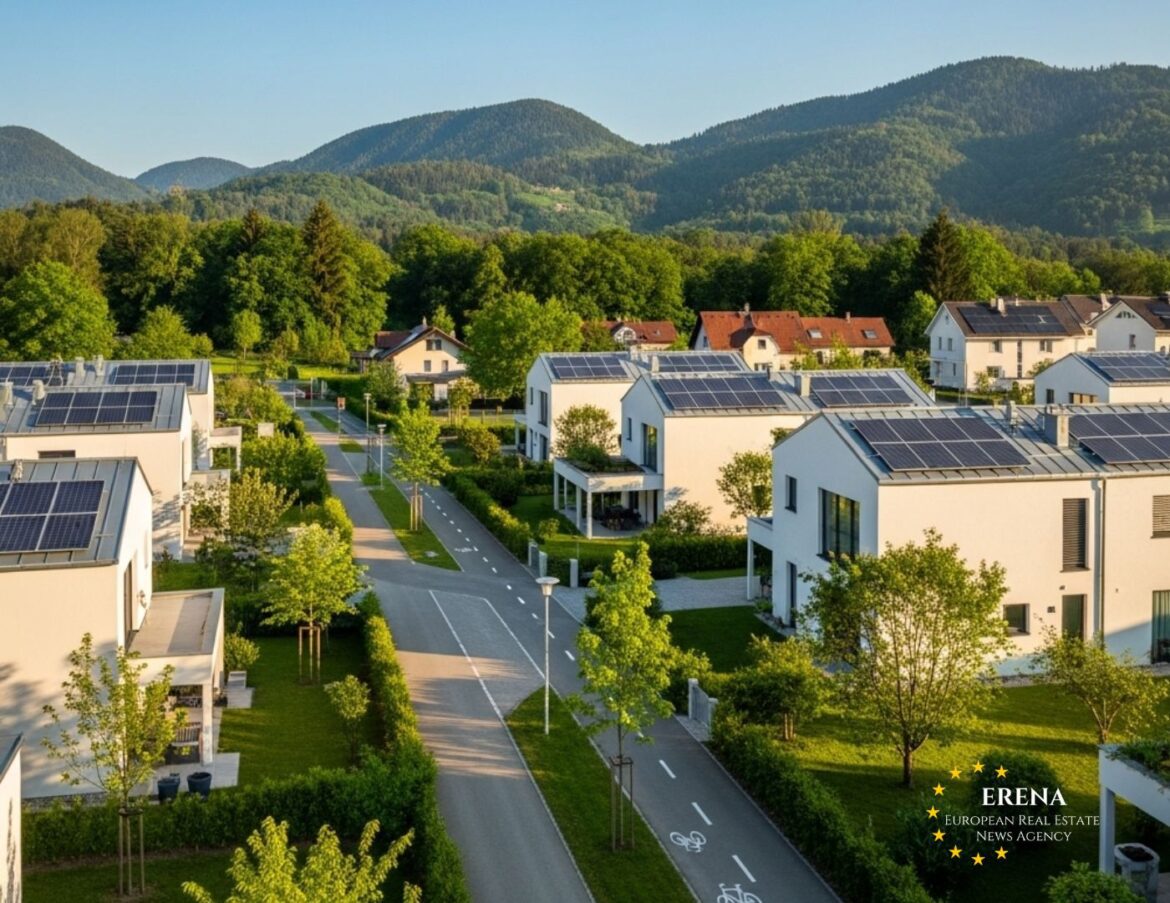Leading German investment manager Real IS is expanding its presence in Central and Eastern Europe, focusing on sustainable development and green real estate in Slovenia. The company has announced its ambitious plans in Ljubljana, aiming to invest in environmentally responsible projects with a focus on long-term returns and sustainable urbanism.
Strategic Shift Toward Slovenia
Despite its small size, Slovenia has become one of the most attractive locations for real estate investors in Central Europe. Political stability, EU membership, a growing economy, and a strong commitment to sustainability have made the country particularly appealing to international funds. For Real IS, Slovenia represents a “natural extension” of its regional strategy.
“We see potential in Slovenia both in terms of economic growth and ESG integration. It’s a country where sustainability is a national priority,” said Klaus Buhlmann, Head of International Investment at Real IS.
First Projects: Green Offices and Mixed-Use Complexes
The company has already entered the active evaluation phase of several investment opportunities. Currently, three projects are under consideration: a certified green office center in Ljubljana, a residential district incorporating co-working and urban farming elements, and a mixed-use development combining retail, education, and recreational facilities.
According to preliminary estimates, the total investment budget could exceed €80 million, most of which will be allocated toward acquiring buildings certified to BREEAM or LEED standards.
“We are in active negotiations with developers and local authorities. It is crucial for us that the projects are not only commercially viable but also align with our vision of a sustainable future,” explained Anka Reinert, ESG Analyst at Real IS.
ESG Is More Than a Trend
Real IS emphasizes that sustainability is not a passing trend but a tool for risk management and yield enhancement. In Slovenia, the company has found a “ready-made infrastructure” for implementing ESG strategies: high levels of digitalization, government support, and strong civic engagement in urban development.
The company is particularly interested in projects that combine environmental and social components. Among other things, they are exploring initiatives that support local entrepreneurship, student housing, and energy-autonomous buildings.
Ljubljana as a Model City
Ljubljana, which was named “European Green Capital” in 2016, continues to impress investors with its forward-thinking urban planning. The city is actively implementing “green corridors,” promoting zero-emission transport, and encouraging the construction of net-zero energy buildings. This aligns closely with the mission of Real IS.
“When I saw how Ljubljana’s transport system operates and how their residential districts are designed, I knew this was the place to realize our ambitions,” Buhlmann noted.
According to a municipal representative, collaboration with Real IS could attract additional investment into the city’s sustainable building fund and promote knowledge exchange between Slovenian and German experts.
Dialogue with Local Partners
Real IS stresses that it does not act as a “foreign dictator” but as a partner interested in local sustainability. The company has already initiated cooperation with several Slovenian architectural and engineering firms.
“We want to engage local contractors so that the projects maintain local identity and contribute to the regional economy,” added Reinert.
According to an economist at the University of Maribor, participation of international investment funds in such initiatives could accelerate the transformation of the country’s real estate sector, especially in energy-efficient retrofitting.
Risks and Challenges
Despite a positive outlook, Real IS acknowledges that Slovenia is a new market with its own challenges. These include regulatory hurdles, complex permitting processes, and a shortage of large certified properties. However, the company considers these challenges manageable.
“We are ready to adapt, but we expect transparency and a sustainable dialogue with local institutions. In the long run, these kinds of markets offer the best returns,” emphasized Buhlmann.
What It Means for the Slovenian Market
The entry of Real IS may serve as a catalyst for attracting other sustainable investors. International funds often follow the lead of industry pioneers, and if Real IS’s projects succeed, interest in Slovenia as a platform for ESG investments could grow significantly.
This also lays the groundwork for a new real estate segment — “sustainable districts” that combine housing, mobility, retail, and green spaces into integrated ecosystems.
Urban planner Tina Mehle believes Slovenia could become a regional model for sustainable development:
“We have the opportunity to show how a small country can implement the world’s most advanced sustainable building standards — and Real IS is a powerful driver of that potential,” said Mehle.
Conclusion
Slovenia is steadily entering the spotlight of Europe’s top investors, thanks to its commitment to sustainability, transparency, and innovation. With its experience and capital, Real IS is well-positioned to play a key role in transforming the local real estate landscape and fostering a new ESG culture.
In the coming months, we will see which assets become part of the company’s Slovenian portfolio. But one thing is clear: the green transformation of real estate in the region is gaining momentum.

